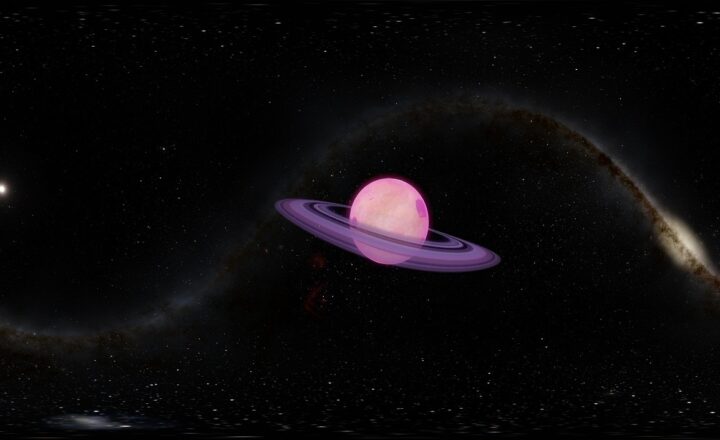The Mystery of Exoplanet Climates: Could They Be Similar to Earth’s Seasons?
November 12, 2024

As scientists continue to explore the vast reaches of the universe, the discovery of exoplanets—planets outside our solar system—has opened a new frontier in our understanding of planetary climates. Among the many tantalizing questions arising from this research is whether the climates of these distant worlds could resemble the seasonal patterns we experience here on Earth. Could they have their version of winter, spring, summer, and fall?
1. Understanding Exoplanets: A Brief Overview
Exoplanets have gained significant attention since the first confirmed detection in 1992. Since then, thousands of these planets have been identified, with properties and sizes greatly varying. Some are gas giants like Jupiter, while others are rocky and Earth-like. The conditions on these varying types of exoplanets are influenced by their distance from their parent stars, composition, and atmospheric properties.
However, not all exoplanets have been created equal. To determine if they could have climates similar to Earth’s, two main factors come into play: the planet’s location in the habitable zone and its atmospheric characteristics.
2. The Habitable Zone: The Goldilocks Zone
The habitable zone is a region around a star where conditions might be just right for liquid water to exist on a planet’s surface. This zone is often referred to as the “Goldilocks zone”—not too hot, not too cold, but just right.
Planets within this zone have the potential for climates conducive to supporting life as we know it and may exhibit seasonal changes, similar to Earth. The distance from the star influences the intensity of radiation the planet receives, which in turn affects its temperature and weather patterns.
Some noteworthy exoplanets located within their stars’ habitable zones include:
- Kepler-186f: A rocky planet approximately 500 light-years away, deemed to be a close analog to Earth.
- Proxima Centauri b: The closest known exoplanet to Earth, orbiting within the habitable zone of Proxima Centauri, a red dwarf star.
- TRAPPIST-1 System: A system of seven Earth-sized planets, three of which sit within the habitable zone.
These discoveries lead to the exciting possibility that some of these planets may experience seasonal climates, mirroring Earth’s diverse range of weather.
3. Atmospheric Conditions: A Crucial Factor
For exoplanets to exhibit seasonal climate patterns, they must possess an atmosphere capable of supporting such phenomena. Earth’s atmosphere plays a vital role in temperature regulation, weather, and seasonal changes. Without it, conditions would be drastically different.
The thickness and composition of an exoplanet’s atmosphere will significantly affect its surface temperature, weather patterns, and whether it can sustain any form of climate. For example:
- Greenhouse Gases: The presence of greenhouse gases like carbon dioxide and methane can trap heat and influence seasonal shifts.
- Atmospheric Pressure: An atmosphere with appropriate pressure could protect the planet from drastic temperature swings and support liquid water, producing climate diversity.
- Weather Patterns: The way weather systems develop can create seasons. Strong winds, temperature variations, and ocean currents can all contribute to climatic challenges reminiscent of Earth’s.
Planets like Kepler-186f and Proxima Centauri b may have atmospheres capable of supporting Earth-like climates, but further research is needed to analyze their atmospheric structure in detail.
4. Simulating Exoplanet Climates: The Role of Climate Models
To better understand how exoplanets might behave climatically, scientists use sophisticated climate models. These models simulate the dynamics of atmospheres and how they interact with radiation, temperature, and pressures on different planets.
General Circulation Models (GCM)
GCMs can provide insights by analyzing the energy balance of a planet to predict climates and seasonal changes based on existing parameters like:
- Orbital Eccentricity: The degree to which a planet’s orbit deviates from being circular can affect its distance from the star, leading to temperature variations similar to seasons.
- Axial Tilt: A tilt similar to Earth’s (approximately 23.5 degrees) may result in seasonal changes driven by solar insolation differences throughout the year.
- Surface Characteristics: Land-sea distribution, ice caps, and vegetation can all influence weather patterns, potentially creating seasons.
Using these models, researchers have begun to speculate on the potential climates of certain exoplanets, leading to fascinating hypotheses about their seasonal characteristics.
5. The Quest for Life Beyond Earth
Understanding the seasons of exoplanets is pivotal to our quest for extraterrestrial life. If some exoplanets possess Earth-like climates and seasonal changes, they may also harbor environments favorable for life as we know it.
Potential biosignatures or indicators of life may manifest in these climates, leading to further explorative missions to study their atmospheres and collect data. Efforts by telescopes like the James Webb Space Telescope are already underway to analyze the atmospheres of these distant exoplanets and understand their climates.
By gaining insights into seasonal changes elsewhere in the universe, we inch closer to answering one of humanity’s biggest questions: are we truly alone in the cosmos?
Conclusion: The Future of Exoplanet Research
The possibility of exoplanets experiencing climate systems similar to our seasonal patterns is an exciting area of study that bridges astronomy and environmental science. As our tools for observation and modeling advance, we can expect to learn much more about these distant worlds.
Future explorations and studies will reveal new insights into the atmospheres and potential climates of exoplanets, enhancing our understanding of what makes a planet suitable for life. Ultimately, the mystery of exoplanet climates may not remain a mystery for long, as we march towards uncovering the wonders of the universe one distant world at a time.







